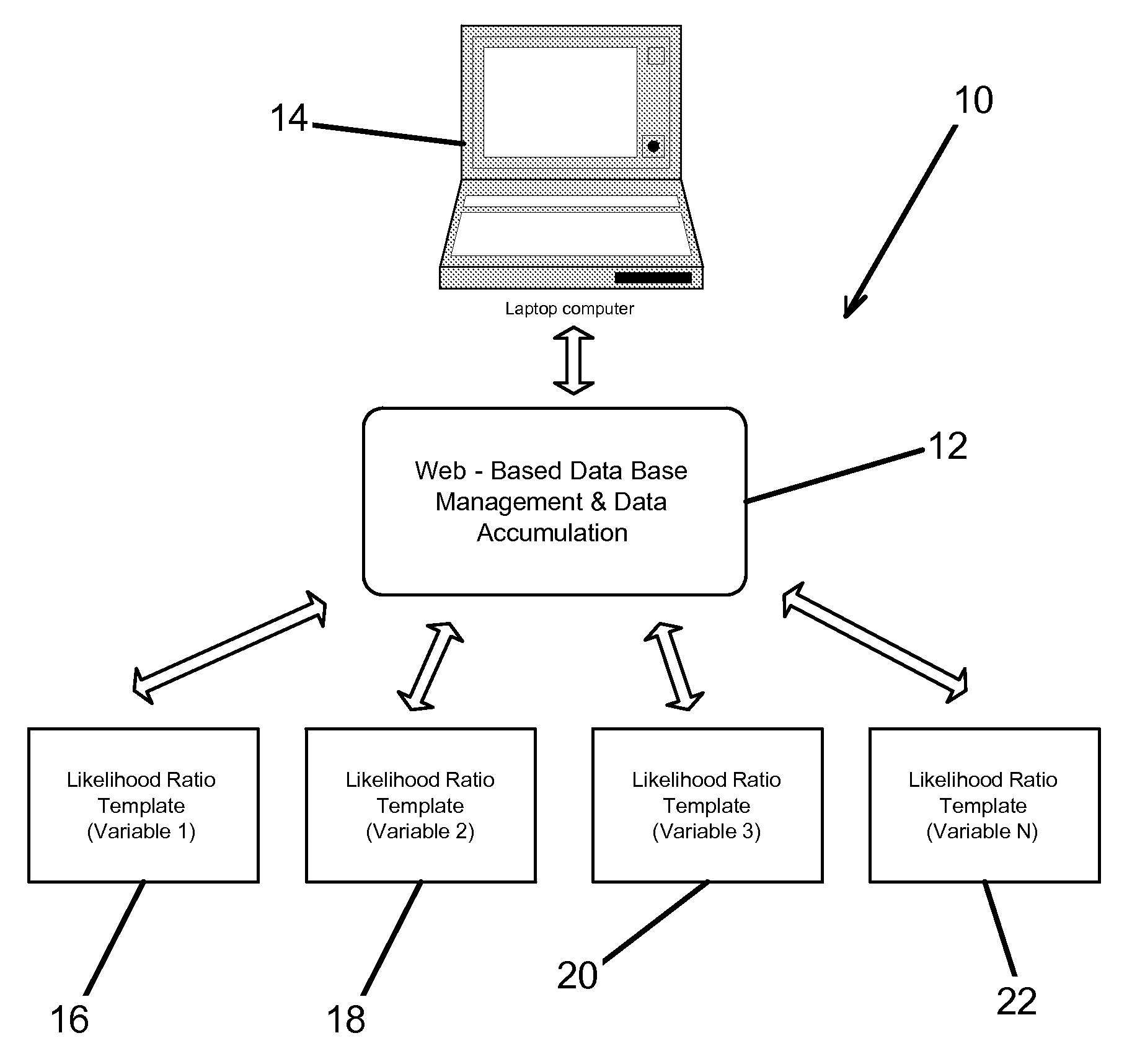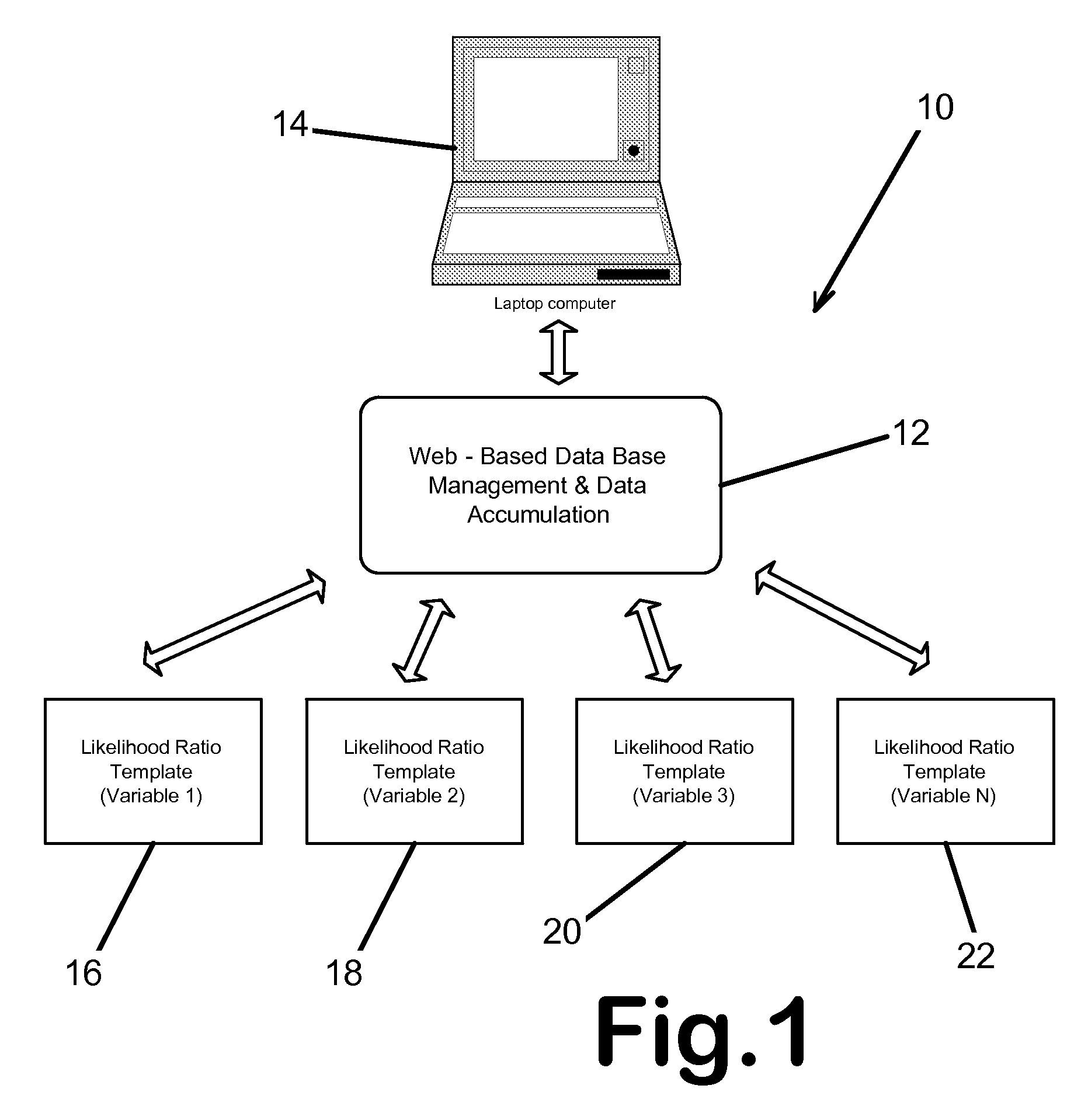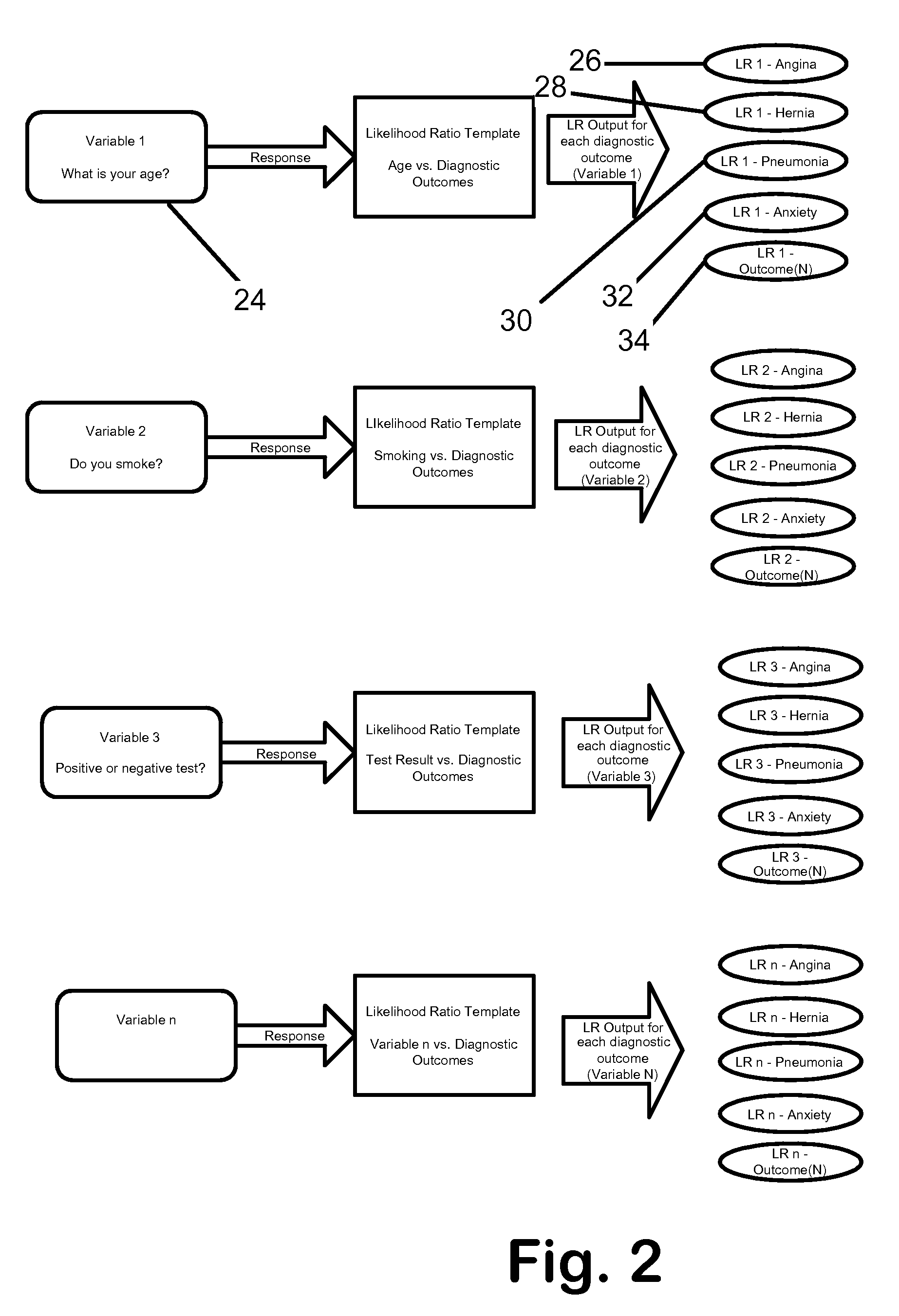Web-Enabled, Evidence Based Medical Diagnostic System
a medical diagnostic system and evidence-based technology, applied in the field of statistically analyzing and diagnosing medical symptoms and diseases, can solve problems such as programming experience and lack of programming expertise, and achieve the effect of improving the quality of life of patients and reducing the risk of infection
- Summary
- Abstract
- Description
- Claims
- Application Information
AI Technical Summary
Benefits of technology
Problems solved by technology
Method used
Image
Examples
Embodiment Construction
[0054]Referring now to the drawings, and first to FIG. 1, shown generally at 10 is a web-based system for generating medical diagnoses. It is to be understood that the system 10 can be implemented in a variety of different ways, so long as it stays true to the statistical or evidence-based implementation described here. In preferred form, all data will be accessible to users from a web-based host server 12 that could be located virtually anywhere in the world. Any laptop or other computer 14 with internet access would have appropriate password access to the system 10.
[0055]The system 10 includes a plurality of independent likelihood ratio templates or matrices 16, 18, 20, 22, corresponding to and illustrating the virtually infinite number of variables that may be generated to multiply against pre-test odds statistics that correspond to different diagnostic outcomes (i.e., diseases). Each likelihood ratio matrix 16, 18, 20, 22 represents statistically accrued data that is updated on ...
PUM
 Login to View More
Login to View More Abstract
Description
Claims
Application Information
 Login to View More
Login to View More - R&D
- Intellectual Property
- Life Sciences
- Materials
- Tech Scout
- Unparalleled Data Quality
- Higher Quality Content
- 60% Fewer Hallucinations
Browse by: Latest US Patents, China's latest patents, Technical Efficacy Thesaurus, Application Domain, Technology Topic, Popular Technical Reports.
© 2025 PatSnap. All rights reserved.Legal|Privacy policy|Modern Slavery Act Transparency Statement|Sitemap|About US| Contact US: help@patsnap.com



